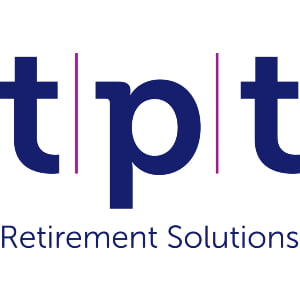
TPT Retirement Solutions
Portfolio level
Portfolio level – Portfolio decarbonisation reference target
Baseline date: 31 December 2019
Baseline performance:
- DB listed equity and corporate fixed income portfolio: 88.35 tCO2e/£m invested
- DC listed equity and corporate fixed income portfolio: 98.28 tCO2e/£m invested
- DB real estate portfolio (scope 3)*: 47.61 kgCO2e/m2
*TPT’s scope 1 and scope 2 emissions for real estate are landlord controlled areas of the assets. These areas are very small and therefore the intensity is close to zero. Scope 3 emissions are tenant controlled areas; this is consistent with the PCAF operational control approach.
Note that real estate emissions are measured in kilogrammes as opposed to tonnes and normalised by owned area (m2).
Target year: 2025, 2030, 2050
Target(s):
- 2025: At least 25% reduction in portfolio emission intensity
- 2030: 50% reduction in portfolio emission intensity
- 2050: Net zero
GHG scopes included: For listed equity and corporate fixed income, scope 1 and scope 2 emissions are currently included, with scope 3 emissions being considered in due course as far as we are able.
Asset classes in scope: Listed equity, corporate fixed income, real estate and sovereign bonds
Methodology/net zero scenarios: TPT intends to rely on the Net Zero Investment Framework developed by the IIGCC TPT will measure the carbon intensity of our portfolio to see where to focus our engagement efforts and to ensure we are on the right trajectory in order to meet our net zero commitment. Ultimately the reduction of absolute emissions at asset level will be the driver in meeting our net zero goals. We will report both the carbon intensity of the investment portfolio and the absolute level of emissions.
TPT intends to use IPCC P1-P3 scenarios to guide portfolio decarbonisation which are consistent with a 1.5oC scenario.
Portfolio level – Investment in climate solutions target
Approach: We commit to increasing investment in climate solutions, where possible, for both schemes, but have only set a quantitative target for the DB scheme. We use an external asset manager for the management of our DC funds who is a signatory of the Net Zero Asset Managers initiative. The manager is responsible for strategic asset allocation decisions relating to climate solutions so we have therefore set a qualitative target.
Quantitative target
Target year: 2030
Target: DB: At least 6% of AUM (return-seeking assets) invested in climate solutions by 2030
Methodology: In line with best practices and current methodologies with the view of integrating emerging frameworks as applicable.
Asset level
Asset level – Portfolio coverage target
Target year: 2040
Target: 100% of AUM in ‘material’ sectors either already net zero, aligned to net zero, or aligning by 2040
Asset classes in scope: Listed equity, corporate fixed income, real estate and sovereign bonds
Data sources: Transition Pathway Initiative (TPI), MSCI, SBTi. For real estate Climate Risk, Real Estate Monitor (CRREM) and asset managers.
Asset level – Engagement threshold target
Target: By 2030 at least 90% of financed emissions in material sectors are either assessed as net zero, aligned with a net zero pathway or the subject of engagement activities.
Additional information
Methodology: TPT recognises that emission reductions should be primarily achieved through the reduction of emissions in our investment portfolio. This is achieved by investing in climate solutions, engaging with high carbon assets to encourage speedy transition and if engaging fails then reducing exposure to high carbon assets. Our asset level targets are therefore crucial for ensuring a real-world decarbonisation.
TPT will measure the carbon intensity of our portfolio to see where to focus our engagement efforts in order to meet our net zero commitment. Ultimately the reduction of absolute emissions at asset level will be the driver in meeting our net zero goals, the role of
the portfolio targets is to act as an accountability mechanism to ensure we are on the right track.
Operational emissions: TPT commits to having net zero scope 1 and scope 2 operational emissions by 2050.
Fossil fuel investment: In terms of exclusions, TPT works with investment managers who demonstrate best in class net zero approaches therefore exclusions are not currently considered necessary. We retain the ability to modify our exclusion approach if evidence shows negative long-term alignment with net zero through our investments.
Additional information: We also have regular dialogue with the investment community and policymakers, official bodies and other financial participants to progress net zero methodological assessments for those assets not covered by existing frameworks. We are part of IIGCC working groups and in ongoing dialogue with the PAII.
Please see TPT’s Climate Action Plan and Climate Change Policy within TPT’s Responsible Investment Framework.